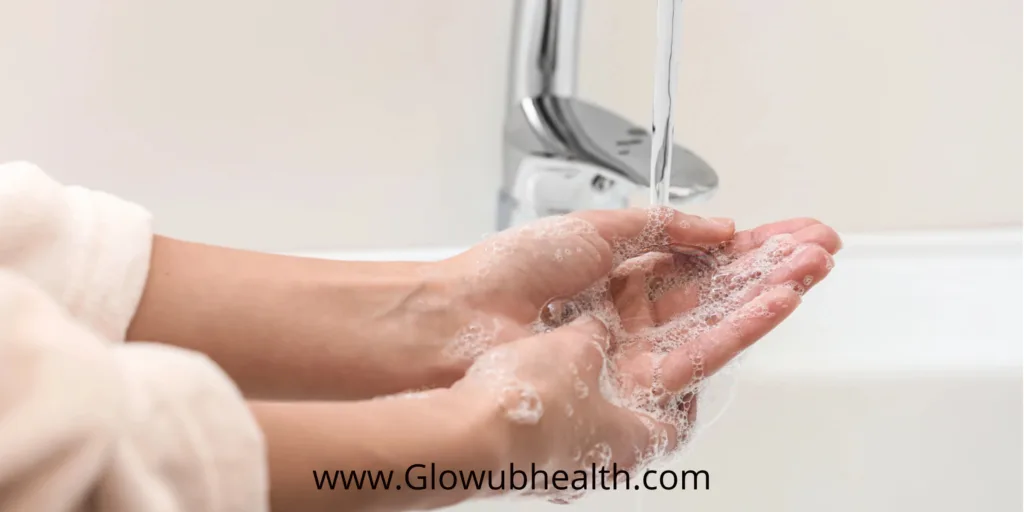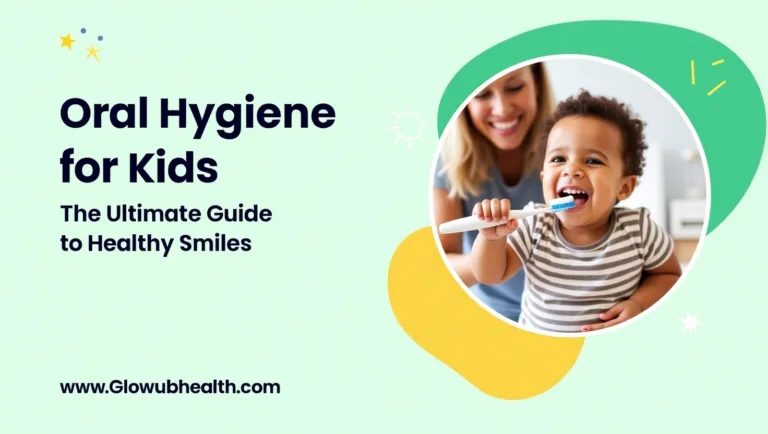Good Hygiene for Kids: Teaching Essential Habits Early
Good hygiene is more than just a daily routine—it’s a vital part of maintaining overall health and fostering good habits that will last a lifetime. Teaching children hygiene from an early age not only keeps them physically healthy but also boosts their confidence and social skills. As parents and caregivers, we play a pivotal role in guiding kids toward good hygiene practices.
This comprehensive guide will explore actionable tips and strategies for teaching good hygiene, covering 10 personal hygiene practices, emphasizing the importance of personal hygiene, and providing insights into good vaginal hygiene for young girls.
This content is intended for general informational purposes only. For specific health concerns or guidance related to your child’s hygiene, please consult your pediatrician or a qualified healthcare provider.

Why Good Hygiene is Crucial for Kids
The Importance of Personal Hygiene
Good hygiene helps prevent infections, reduces the spread of germs, and promotes overall wellness. Beyond physical health, it also plays a significant role in mental and emotional well-being. A child who practices good hygiene feels confident and ready to engage in social activities without fear of judgment.
The CDC emphasizes that foundational hygiene habits, such as handwashing, are among the simplest yet most effective ways to prevent the spread of infectious diseases. Teaching these habits early can instill lifelong practices that benefit children well into adulthood.
10 Personal Hygiene Practices Every Child Should Learn
Children need guidance and repetition to master hygiene practices. Here’s a closer look at the essential habits kids should develop:
1) Handwashing: A Critical Habit

Proper hand hygiene is the first line of defense against illnesses. Children should wash their hands:
- After coughing, sneezing, or blowing their nose
- Before and after meals
- After using the restroom
- After playing outside or with pets
How to Teach:
- Use visual cues like posters showing the steps of handwashing.
- Make it fun by singing songs that last 20 seconds (e.g., “Happy Birthday” twice).
- Explain how germs spread and why soap and water are effective in getting rid of them.
2) Brushing and Flossing Teeth

Dental hygiene is vital for healthy teeth and gums. Poor oral hygiene can lead to cavities, bad breath, and gum disease.
Key Steps:
- Visit the dentist every six months.
- Brush twice daily with fluoride toothpaste.
- Floss at least once a day.
Pro Tip:
Use a kid-friendly toothbrush with their favorite cartoon characters and flavored toothpaste to make brushing more enjoyable.
3) Bathing and Showering

Regular baths or showers keep the skin clean and remove sweat, dirt, and bacteria.
Teach children how to:
- Wash all parts of their bodies, including behind the ears, neck, and feet.
- Use age-appropriate soaps and shampoos.
Fun Idea:
Introduce bath toys or colorful sponges to make bath time more appealing.
4) Hair Care

Proper hair hygiene prevents scalp issues like dandruff and lice.
- Teach kids how to wash their hair thoroughly.
- Ensure they use a mild shampoo that suits their hair type.
Frequency:
- Hair washing frequency can vary based on hair type and activity level (e.g., every 2-3 days).
5) Nail Hygiene

Keeping nails clean and trimmed helps prevent the buildup of dirt and bacteria, reducing the risk of infections.
Tips:
- Teach kids to avoid biting their nails, as it introduces germs into the mouth.
- Trim nails weekly.
6) Good Vaginal Hygiene for Girls

For young girls, understanding good vaginal hygiene is essential for comfort and health.
Teach them to:
- Wash the genital area with water and mild, unscented soap.
- Avoid using harsh or perfumed products.
- Wear breathable, cotton underwear and change it daily.
Important Note:
Explain that wiping should always be done front to back to prevent the spread of bacteria.
7) Foot Hygiene

Feet can harbor bacteria, especially in warm, sweaty conditions.
Children should:
- Wear clean socks and well-ventilated shoes.
- Wash their feet daily and dry them thoroughly, especially between the toes.
8) Coughing and Sneezing Etiquette
Teach kids to cover their mouths with their elbow or a tissue when coughing or sneezing. This reduces the spread of germs.
Practice Tip:
Make it a game to see who remembers to “catch their sneeze” the most times in a day.
9) Clean Clothing and Laundry Habits
Wearing clean clothes every day, especially undergarments, is crucial for hygiene.
- Help them understand the importance of laundry and how to sort dirty clothes.
- Teach kids to change clothes after physical activity.
10) Toilet Hygiene
Proper toilet hygiene includes:
- Wiping thoroughly and flushing.
- Washing hands immediately after.
Parent Tip:
Use flushable wipes and explain their role in cleanliness for younger children.
Strategies to Make Hygiene Fun and Engaging
1) Create a Hygiene Reward Chart
Children respond well to positive reinforcement. Use a chart to track their hygiene habits and offer small rewards for consistency.
2) Read Books and Watch Videos
Introduce hygiene-themed books and educational videos that make learning fun. Characters that model good hygiene can inspire kids to do the same.
3) Role Modeling
Children often imitate adults. Be a role model by practicing good hygiene yourself. Let them see you brushing your teeth, washing hands, and grooming.
4) Use Technology
Apps and timers designed for kids can gamify hygiene tasks, making them more engaging.
Overcoming Common Hygiene Challenges
Resistance to Bathing
If your child dislikes bathing, consider:
- Setting a timer for a “quick bath race.”
- Using bath bombs or bubbles.
- Allowing them to bring toys into the bath.
Fear of Dental Visits
Ease anxiety by:
- Visiting the dentist for a casual meet-and-greet before the first appointment.
- Reading books about friendly dentists.
Long-Term Benefits of Teaching Good Hygiene
Good hygiene habits have long-term benefits, including:
- Better Health: Reduced risk of infections and diseases.
- Increased Confidence: Cleanliness boosts self-esteem and social interactions.
- Independence: Kids become more self-reliant in managing their personal care.
Case Study:
A report from UNICEF highlights how schools that implement hygiene education programs see a significant decrease in absenteeism due to illness. This reinforces the importance of early hygiene education.
Read More: Healthy way of living: 10 Simple Habits for a Healthier Lifestyle
Conclusion: Building a Lifetime of Good Hygiene
Teaching children good hygiene is a gift that keeps on giving. By emphasizing 10 personal hygiene practices and the importance of personal hygiene, you’re setting them up for a healthier, happier life. Start early, be consistent, and make it fun.
As children grow, these habits will become second nature, fostering independence and well-being. Remember, good hygiene is not just about cleanliness—it’s about health, confidence, and quality of life.
FAQ
1. At what age should I start teaching my child about hygiene?
You can begin teaching hygiene habits as early as toddlerhood. Start with simple tasks like handwashing and gradually introduce other habits as they grow.
2. How do I encourage my child to brush their teeth without a fuss?
Make toothbrushing fun by using a toothbrush with their favorite character, flavored toothpaste, or playing a song they enjoy. You can also use reward charts to track their progress and offer small incentives.
3. What’s the best way to teach handwashing?
Use the “5-step rule”: Wet, Lather, Scrub (for 20 seconds), Rinse, and Dry. Singing songs like “Happy Birthday” twice can help them time it correctly.
4. How often should children bathe?
For most kids, bathing 2-3 times a week is sufficient. However, daily baths may be necessary for children who sweat a lot, play sports, or have skin conditions that require frequent washing.
5. How do I teach my daughter about good vaginal hygiene?
Start by explaining the importance of cleanliness and comfort. Teach her to wash with water and mild, unscented soap and to always wipe front to back. Emphasize wearing breathable cotton underwear and changing it daily.
6. What should I do if my child refuses to follow hygiene routines?
Try making it a game or using positive reinforcement. Reward charts, fun songs, and involving them in choosing their hygiene products can motivate them. Be patient and consistent.
7. Is hand sanitizer a good alternative to handwashing?
Hand sanitizer is a convenient alternative when soap and water aren’t available. However, handwashing with soap and water is more effective at removing dirt and certain types of germs.
8. How can I help my child understand the importance of hygiene?
Use age-appropriate explanations and real-life examples. Show how germs can spread through hands or coughs and how cleanliness helps prevent illness. Storybooks and videos can also be helpful.
9. Should I be concerned about using scented hygiene products for my child?
It’s best to avoid heavily scented products, especially for younger children, as they can cause skin irritation or allergic reactions. Opt for mild, fragrance-free products suitable for sensitive skin.






